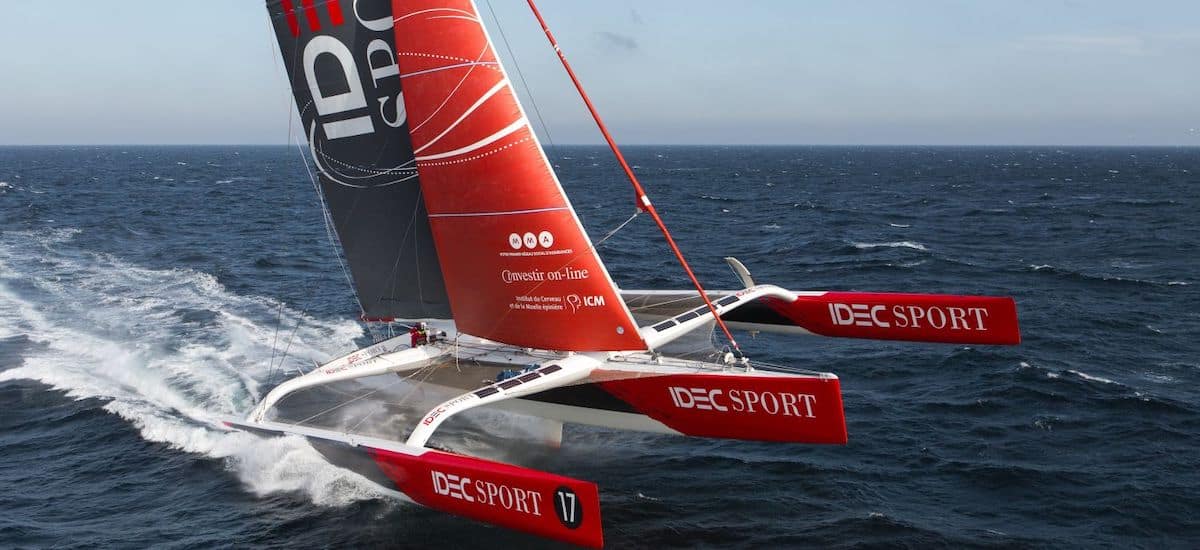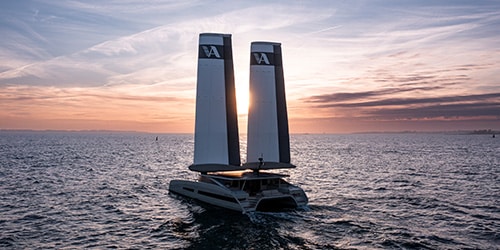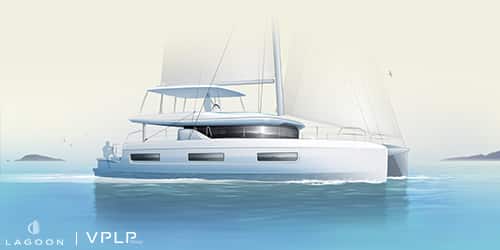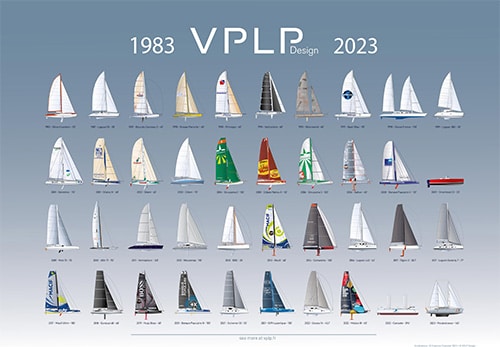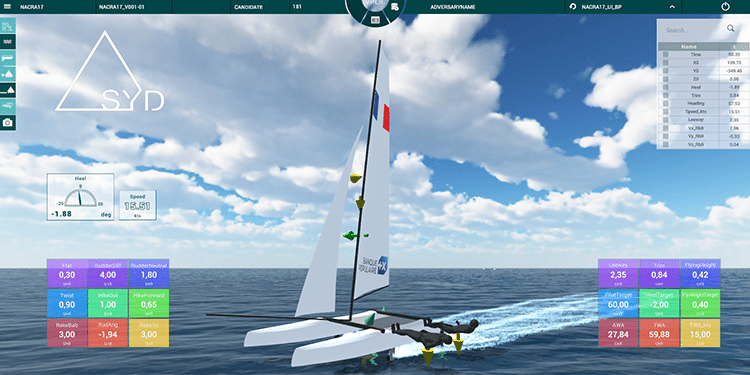The winter of 2016–2017 will forever be a high point in the history of VPLP Design. In the space of just a few weeks, between 25 December and 26 January, Thomas Coville broke the solo round the world record, Armel Le Cléac’h sailed to victory in the Vendée Globe, and Francis Joyon and crew won the Jules Verne Trophy. These three major achievements have one thing in common: the boats involved were all designed by VPLP (in collaboration with Guillaume Verdier for Banque Populaire VIII). Vincent Lauriot-Prévost, Xavier Guilbaud and Quentin Lucet talk about this fantastic winter and what the future holds for the firm.
What impressed you about these great performances?
Xavier Guilbaud: First of all, the sailors really set a very high standard. We knew the boats were capable of hitting those speeds, and now we know the skippers are capable of getting more out of them – and for longer – thanks to the progress made in autopilots and electronics, which are constantly improving. Thomas Coville was not far off pushing Sodebo to the limit throughout the course. It was an exceptional feat of endurance.
Vincent Lauriot-Prévost: I think we can also emphasize that perseverance pays. Thomas beat the record at the fourth time of trying, Francis set off twice this winter after having failed the autumn before, and Armel won on his third attempt.
What are the technical repercussions from an architectural point of view?
Quentin Lucet: For the IMOCAs, I think the Great Foil Debate has been settled! With four foilers taking the first four places [NB: and five VPLP-Verdier designs in the first five places], the doubters have to admit they were wrong. And we shall continue to develop foil technology which, lest we forget, is only two years’ old on the IMOCAs. Another lesson learned involves the standard parts: the one-design mast and keel proved to be fit for purpose, which is good news. Lastly, I would say the sailors were also fit for purpose, which is good news too!
Vincent Lauriot-Prévost: In Francis Joyon’s case, I think putting to sea with a skeleton crew and a shorter mast was the right choice. We mustn’t forget that Idec Sport is the old Groupama 3 and underwent works to shave four tonnes off her initial weight, reducing her to a little under sixteen tonnes. Fitting a shorter mast enabled her to retain the same weight-to-sail-area ratio while lowering her centre of effort; using lighter sails made handling easier for a small crew, which in turn reduced weight, and so on. It really was a virtuous circle! The shorter mast also improved her fore-and-aft stability, so the crew could push her harder. That’s how they managed to run several days before a depression and cross the Indian Ocean at an average speed of thirty-five knots.
Thomas Coville and Francis Joyon set their respective records with ‘old’ boats. Isn’t that a bit odd?
Xavier Guilbaud: There’s nothing shocking about it. The big multihulls are designed to be competitive for ten years or so. And as Vincent has just pointed out with Idec Sport, they are being heavily modified all the time. It’s the same for Sodebo, she has very little in common with Olivier de Kersauson’s Geronimo. Except for the floats, everything was changed. And it was her first circumnavigation…
What can you tell us about the next generation of IMOCAs?
Quentin Lucet: Well, in the coming days we’ll be debriefing the skippers and looking at the data recordings. What we do know is that we are still in the early stages of foil development. For example, during the Vendée Globe the skippers only used them in conditions that they had trained for, amounting to perhaps 30% of the race. So we’ve got plenty of room for improvement. It’s the same on the design side of things: we started studying new combinations of appendages and hull lines, and we’re pretty confident that we can add a few knots to the performances of the 2016 class of foils. The forces foils bring to the equation are, as you know, a whole new ball game! We’ve got lots to think about and study if we’re going to make boats capable of exploiting them to the full. Especially as changes to the IMOCA rules might be giving us some extra leeway in how we trim the foils…
Where is the Ultimate class in terms of design?
Xavier Guilbaud: On paper, the new Ultimates are clearly faster on a round-the-world run. Macif demonstrated her superiority over Sodebo by beating her in the Transat Jacques Vabre and The Transat bakerly and taking her 24-hour record. Macif and Banque Populaire IX are going to be three or four tonnes lighter and we’ve still got some more weight to shed. And of course there are the foils, too, which we’re working on continuously. Which is why Thomas Coville and his sponsor have decided to build a new Ultimate. I can’t wait for the 2019 attempt!
